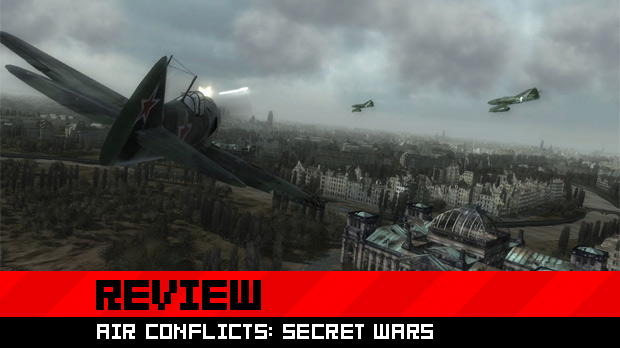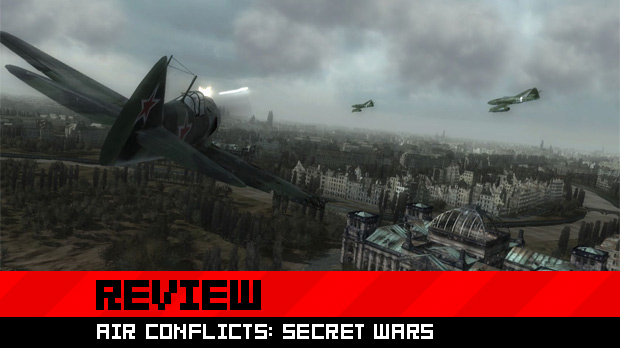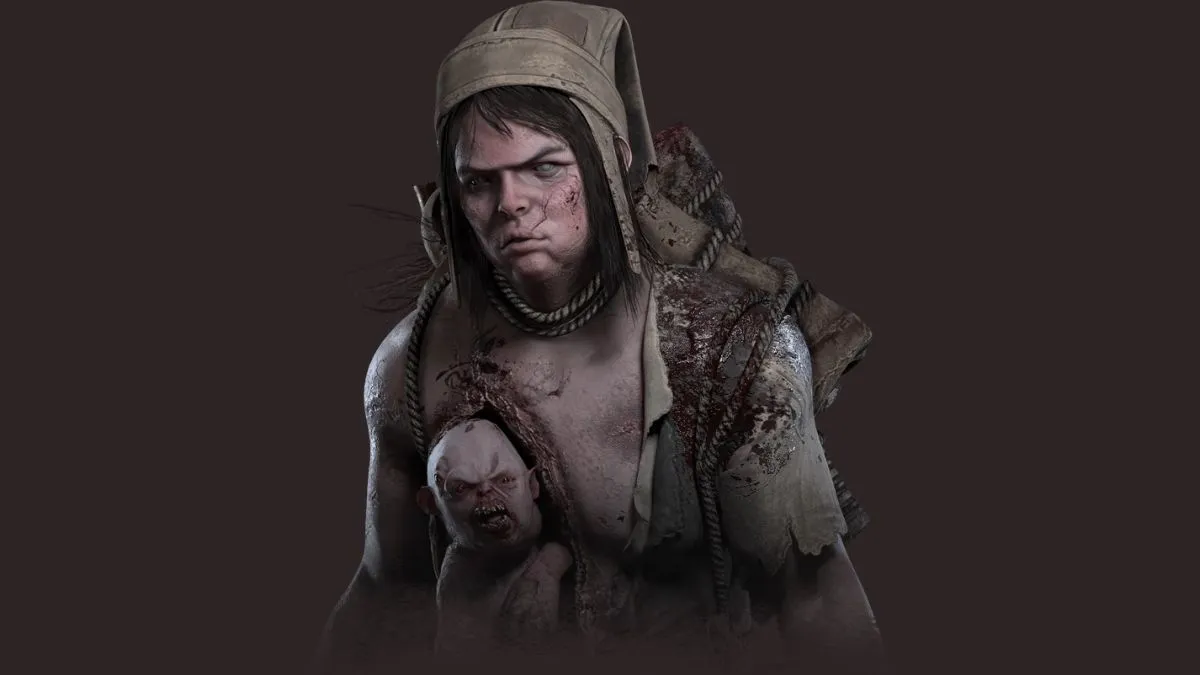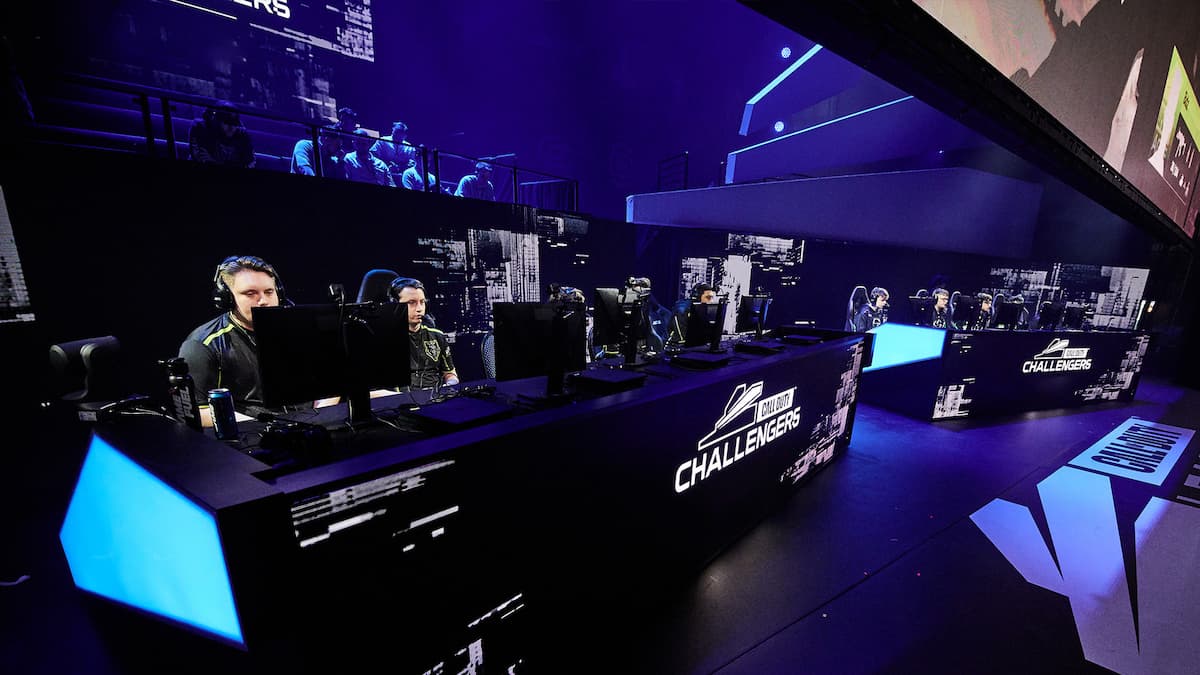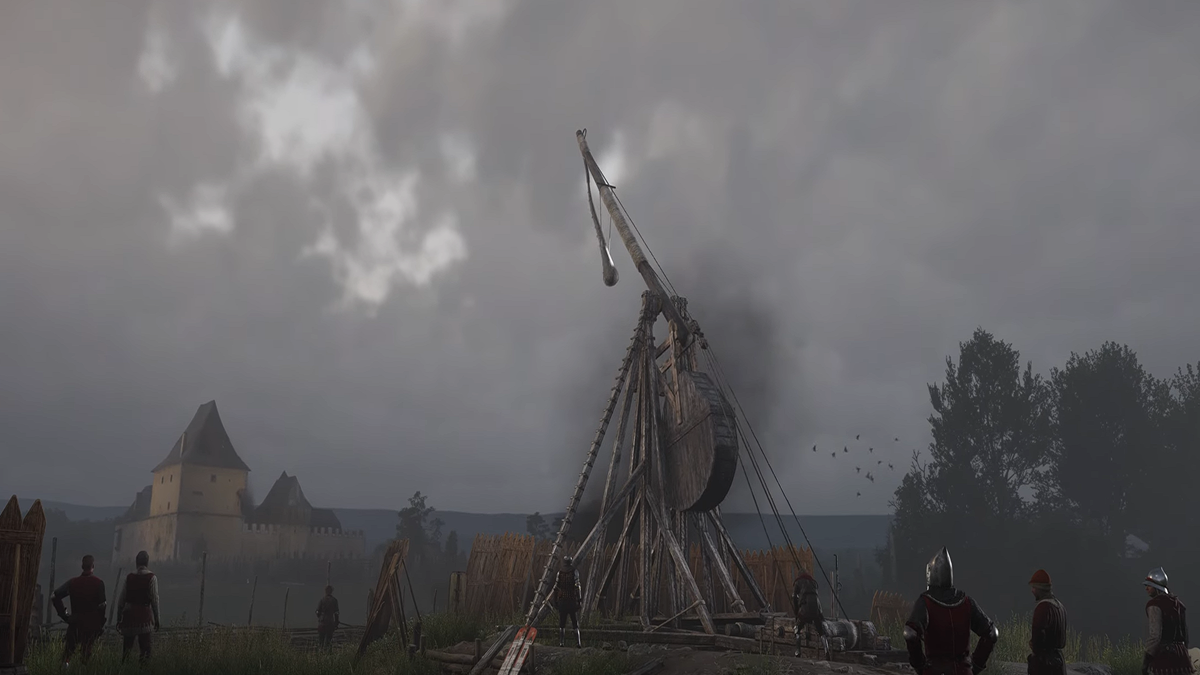Combat flight simulators are not exactly the hottest genre in town, especially on the consoles. Whereas IL-2 Sturmovik dominates all opposition on the PC, the console games are almost universally more arcade-oriented. And with the exception of Apache: Air Assault, the arcade control scheme is usually the more enjoyable one compared to any offered simulation option when you are stuck with a controller.
That doesn’t mean the genre doesn’t have its fans and when a budget-priced combat flight sim flies out of Europe, there’s always someone willing to give it a try. Enter Air Conflicts: Secret Wars, a game that looks decidedly average on all fronts — if you have even heard about it before today — but one that surprisingly enough isn’t too bad at all.

Air Conflicts: Secret Wars (Xbox 360[Reviewed], PlayStation 3, PC)
Developer: Games Farm
Publisher: bitComposer
Released: July 8th (Europe), August, 2011 (North America)
MSRP: €39,95
As DeeDee Derbec, a young and dashing female smuggler pilot who gets swept up into the events of World War II, you travel around the European theater doing what you’re supposed to be doing: shooting down Nazis, bombing Nazis, and occasionally doing supply drops or flying basic stealth missions from point A to B.
The game starts out rather dodgy, throwing “cutscenes” in your face that are just a single image which the camera pans over a couple of times — focusing on different aspects of the image to fit the voice-over narration, if you’re lucky. The first campaign or so sees you partaking in some truly awful missions that involve flying to a checkpoint or shooting down a few fighters or bombers, and strangely enough these missions can sometimes only take a few minutes to complete.
If you stick with it and keep on playing, however, it actually becomes quite an enjoyable little game. Missions become slightly more varied, the story picks up, and you start to unlock more and more planes that each have their own statistics and weapon loadouts.

The planes are sadly not very distinctive in the way they feel. Bombers are slow and handle even slower, with the option to use a turret and shoot backwards or sideways using the d-pad. Unfortunately, since the turret’s power is pretty useless, you are unlikely to ever down more than 20 planes this way throughout the game.
Fighters handle much better and are a lot faster, and later in the game you’ll unlock the Me-262 jet fighter and Hortha-Gothen Flying Wing to mess around in. All the planes in the same class handle almost identically though, and you’ll be hard pressed to notice the handling difference between a Mosquito and a Stuka. What’s worse, all the planes lack a sense of speed. Only after flying all of them do you notice the difference, and even then it’s hard to notice whether you are flying at 33% throttle or a maximum speed.
Where the difference between planes does come in is in the weapon loadout, if you can call it that. Each plane has a set amount of rockets and bombs it can fire, which reload automatically at different speeds depending on the plane. It’s an arcade game, so there’s no resupplying or refueling or anything like that. Aircraft can be shot down with rockets if you’re lucky, if you happen to get the time to line them up to an enemy that flies in a straight line, or if you shoot them right before smashing into a plane. The latter is the easiest option, as there is no collision model for planes in place.
Planes do have some graphical damage modeling but it doesn’t impact how the plane flies, making a Spitfire with half its wing shot off look pretty comical. To make up for that, you’ll have little Nazi soldiers running for their lives on the ground and screaming in an explosion of blood when you bomb them to smithereens, and a mission in which you need to shoot down over a hundred Nazi paratroopers who go “Aaaah” when their parachutes collapse.

It’s a shame that the missions are pretty drab. You’ll go through the standard WWII scenarios under the guise of helping out resistance fighters throughout Eurasia, but at no point will you be surprised with the mission design. Compared to Ace Combat 6, IL-2 Sturmovik: Birds of Prey and H.A.W.X., Air Conflicts: Secret Wars disappoints in this regard. It’s a good thing the missions are at least pretty varied, as far as shooting down aircraft and bombing ground targets during WWII can provide variety.
The controls work well enough, with only the left stick used for controlling your plane and the X and Y buttons for decelerating and accelerating. You’re notified that decelerating will help you turn faster, but that’s only an effective tactic for a handful of very slow or very fast planes. For the most part, it won’t matter at all how fast you are going in a turn.
If you try to fly in a loop, you will suddenly face downwards upside down without the option to roll around and escape a crash — at least when using the arcade control scheme. Because the simulation control scheme is just no fun to use at all in this game, you are simply stuck with making normal turns and sometimes braking because you’re used to doing so in a flight sim whether it actually does anything or not.
Landing is a matter of flying through four loops after which you are instantly on the ground, and usually you can take off directly afterwards with the cargo or person of interest on board. You’ll earn “Stars” for completing objectives and destroying enemies, which unlock new planes, but there’s little feedback on how you can earn more of them. Likewise, you sometimes level up and get a skill point to spend on handling, endurance, critical hits (“You shot a pilot through the head!”) and wingmen effectiveness. But there’s no hint on how to earn these points or if they are just allotted for certain missions.

So far Air Conflicts: Secret Wars might sound like a truly terrible game and at times it can be. But for the most part, it can offer some stupid budget fun despite its faults. Enemy planes will dodge out of the way if you shoot at them, turning dogfights into an affair that will always keep you busy without taking minutes to down a single plane in a dogfight. Depending on the difficulty, there is a very generous lock-on reticule that makes shooting down enemy planes pretty easy. Only on the highest difficulty will the target reticule lock-on less often, and even then it’s never hard to complete a mission.
It’s a very arcade experience that may feel dumbed down to the hardcore flight sim enthusiast, but this game doesn’t try to satisfy that audience. If you can look past the game’s faults, the gameplay has plenty of fun to offer. Surprisingly enough, the story is not terrible either.
Penned by the writers at International Hobo, the story is in fact pretty depressing. Throughout the seven campaigns that make up DeeDee Derbec’s story, she is always on the lookout to find out what happened to the father she never knew. All she knows is that he never returned from World War I. In each campaign, you will play a fighter who was on her father’s squadron and fight a single mission alongside Guillaume Derbec.
These missions are hard to fail, and merely serve to provide a backstory for her father’s experience and character during the war. While a voice-over from one of DeeDee’s father’s old squadron mates tells her what had happened, you act out these events flying a biplane and make some simple bombing runs. Again, these missions offer nothing groundbreaking but a nice change of pace.

As the story progresses, you will lose friends along the way and DeeDee turns from a simple happy-go-lucky alcoholic smuggler into one of the most depressing characters you are likely to find in any video game. Even right up to the finale, everything about DeeDee’s adventures is a tale of atrocities, mass murder, the bombing of field hospitals, the loss of friends, and her descend into a war-torn woman who is slowly stripped of a soul.
Sadly, while the story and script might surprise you at times given the budget nature and the genre of the game, the voice acting ruins almost all of it. Only four actors do the voices of around 12 characters, and when DeeDee is talking with her awful French accent to a Russian resistance fighter who has the exact same voice, it can become hilarious at times.
Despite the title mentioning Secret Wars, there is not really any secret war to speak of. The story about helping out the resistance in various regions is a nice break from the standard RAF superhero pilot story, but don’t expect anything as grand as Secret Weapons Over Normandy.

Air Conflicts: Secret Wars is a weird game. Everything from the graphics to the music and sound is passable, and it doesn’t hold up to the best this genre has to offer on the consoles. But strangely enough, it can be a damn enjoyable little game to play.
Even though it’s stitched together from pieces of varying quality and even though the writing cannot save the boring cutscenes or the mission designs that never rise above mediocrity, it’s still a lot more fun than most other budget simulator games on the consoles. Hell, it’s more fun than the awfully disappointing H.A.W.X. 2.
Make no mistake, this is game that no one but the most avid of console flight sim fans should ever play. If you can look past its budget production values and design, there’s about 7-8 hours of missions and multiplayer that practically nobody but the Achievement whores seem to be playing online — though there is system-link multiplayer that will also give you Achievements if you are into that.
Air Conflicts: Secret Wars might be a budget title in price, looks, and polish. But it’s a simple and surprisingly enjoyable game that hardcore fans of the genre will enjoy if they can go in with low expectations. It doesn’t do anything new or anything special but if you see it discounted (it already dropped to half price in Europe within two weeks of release), or if you can rent it, you might have more fun with it than you might expect.
